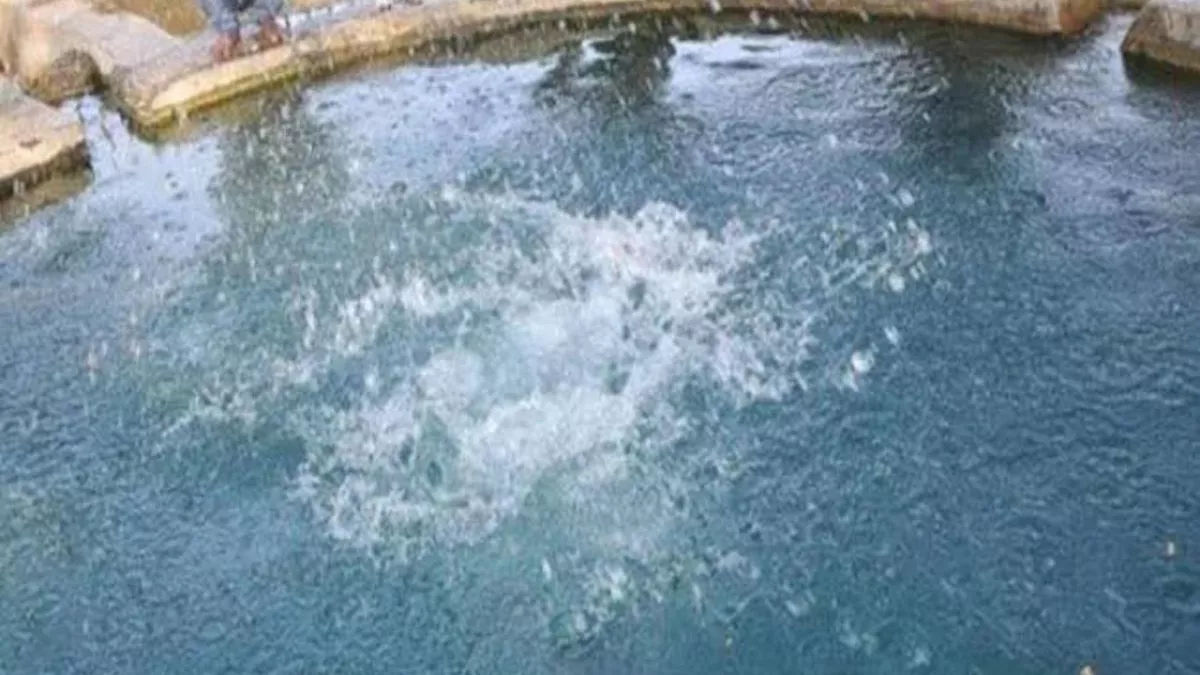During Navratri, devotees from various faiths gather at the Ma Bhadrakali Temple in Itkhori, intensifying the spiritual aura of the place. The air resonates with chants, prayers, and the fragrance of incense, creating an atmosphere of devotion and reverence. Pilgrims come to seek blessings from Ma Bhadrakali, the embodiment of Shakti, and partake in the divine energy that permeates the temple complex
Itkhori, situated at the confluence of the Vitra and Baxa rivers, is home to the Ma Bhadrakali Temple, a sacred site where three religions converge. Located 150 kilometers from Ranchi, Itkhori witnesses the convergence of Sanatan (Hinduism), Buddhism, and Jainism. This sacred land has a rich history of religious harmony, dating back to prehistoric times.

For followers of Sanatan Dharma, this holy ground serves as a center of faith, housing the revered Ma Bhadrakali Temple and the Siddha Peeth of Sahasra Shivalinga Mahadev. It is believed to be a place of great significance for those following Sanatan Dharma. Meanwhile, Buddhists revere Itkhori as the land where Lord Buddha, the founder of Buddhism, performed meditation and sought enlightenment.
Legend has it that Prince Siddhartha, who later became Lord Buddha, embarked on his quest for peace here. During his meditation, Siddhartha’s mother came to take him back, but his determination was unshaken. It was at this moment that the name ‘Itkhori’ originated, which later transformed into ‘Itkhori.’ Jain devotees consider this place as the birthplace of the 10th Jain Tirthankar, Lord Shitalnath Swami. It was the ascetic Meghamuni who, through his penance, established this site as a Siddha Peeth.

Historical and mythological narratives also connect Ma Bhadrakali Temple with the exiles of Lord Rama and the Pandavas during their undisclosed period of wandering. From an archaeological perspective, the temple complex holds considerable importance. The Archaeological Survey of India, during its excavations in 2011-12 and 2012-13, discovered the remains of ancient monasteries and temples. These findings include sculptures crafted from sandstone and invaluable black stone statues that narrate the glorious history of the distant past.
The temple complex boasts a priceless black stone idol of Ma Bhadrakali, measuring nearly five feet and depicting a four-armed goddess. Inscriptions in Brahmi script beneath her feet indicate that King Mahendra Pal II commissioned the idol during the 9th century.
Sahasra Shivalinga, a unique feature, showcases 1,008 Shivlingas carved from a single stone. Performing the Abhishek, a ritualistic bath, on these Shivlingas simultaneously is believed to bring blessings. In front of the Sahasra Shivalinga Temple stands a colossal Nandi idol.
The complex also houses an extraordinary Buddhist stupa, sometimes referred to as the ‘Manauti Stupa.’ This stupa features 1,004 small and four large Buddha statues, with one depicting Lord Buddha in deep meditation. The Archaeological Survey of India dates the stupa to the 9th century. It is worth noting that this stupa may be one of the 84,000 stupas commissioned by Emperor Ashoka, adding to its historical and religious significance.
During the archaeological excavations in 2011-12, the remains of a stupa were uncovered in the temple complex. Archaeologist N.G. Nikose, a former regional director of the Archaeological Survey of India, claimed that this stupa was built by a Buddhist monk. The department’s records also verify this discovery.
The Jain Museum within the temple complex houses a foot impression of Lord Shitalnath, the 10th Jain Tirthankar. This impression, carved into a valuable stone, was discovered during a community excavation in 1983. The stone bears an inscription in Brahmi script, indicating that it marks the birthplace of Lord Shitalnath.
The temple complex also includes the ancient Kanuniya Mai Temple, where a stone bears carvings of the sun, moon, and a trident. The same stone features carvings of a man and a woman, suggesting the temple’s association with the concept of ‘Sati’ in ancient times.
The district administration has allocated approximately 2.5 acres of land for the construction of temples, dharamshalas, and other facilities to preserve and enrich the temple’s glorious heritage. This ongoing effort aims to restore the temple complex to its former glory, both culturally and historically.
Accessibility to the Temple: The Ma Bhadrakali Temple complex in Itkhori is located about 150 kilometers from the state capital, Ranchi. It is roughly 35 kilometers from the district headquarters of Chatra and 50 kilometers from Hazaribagh’s regional headquarters. The nearest railway station is at Koderma, approximately 56 kilometers away, while the nearest airport is Bodh Gaya, about 90 kilometers from Itkhori.”














